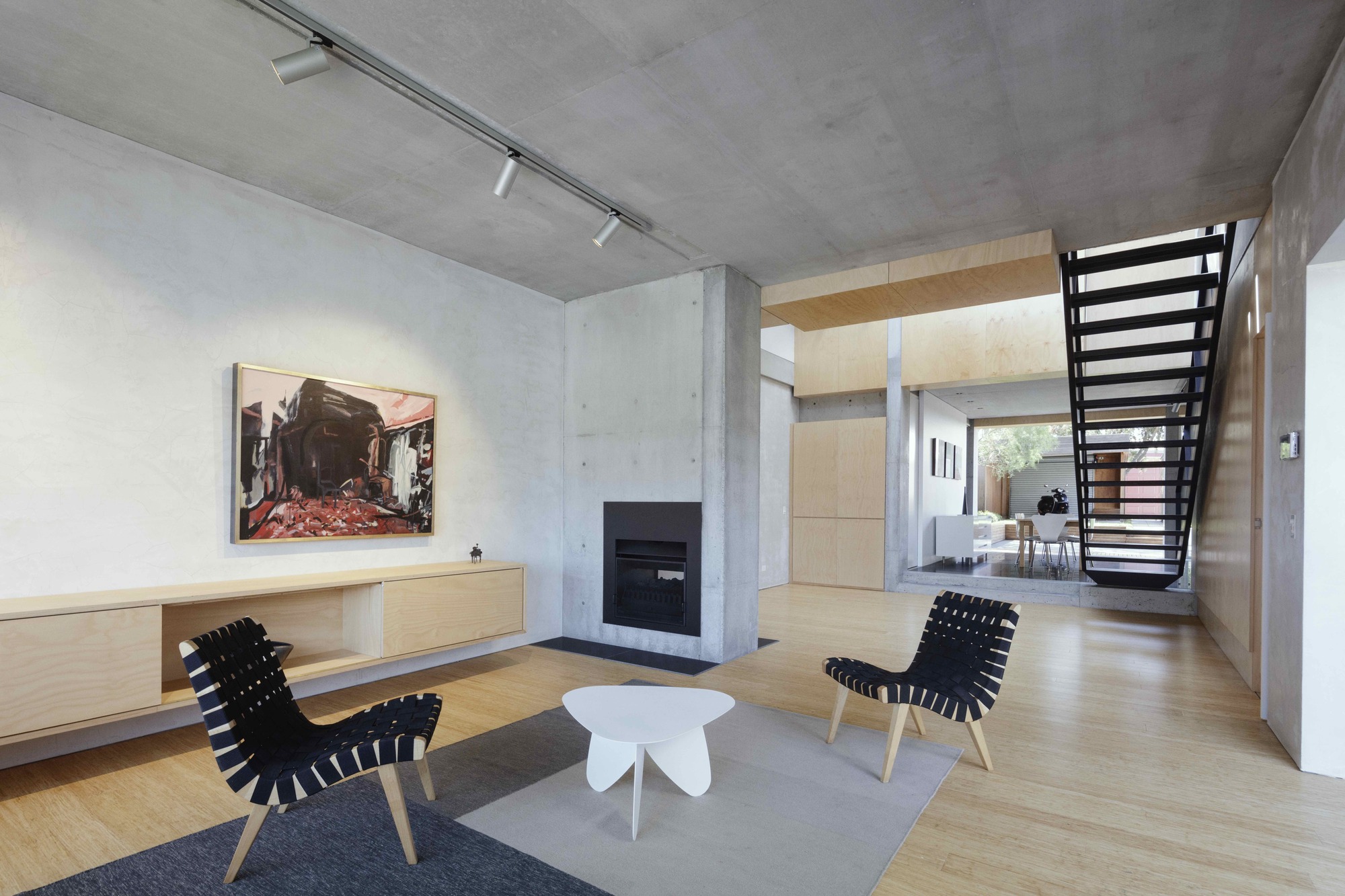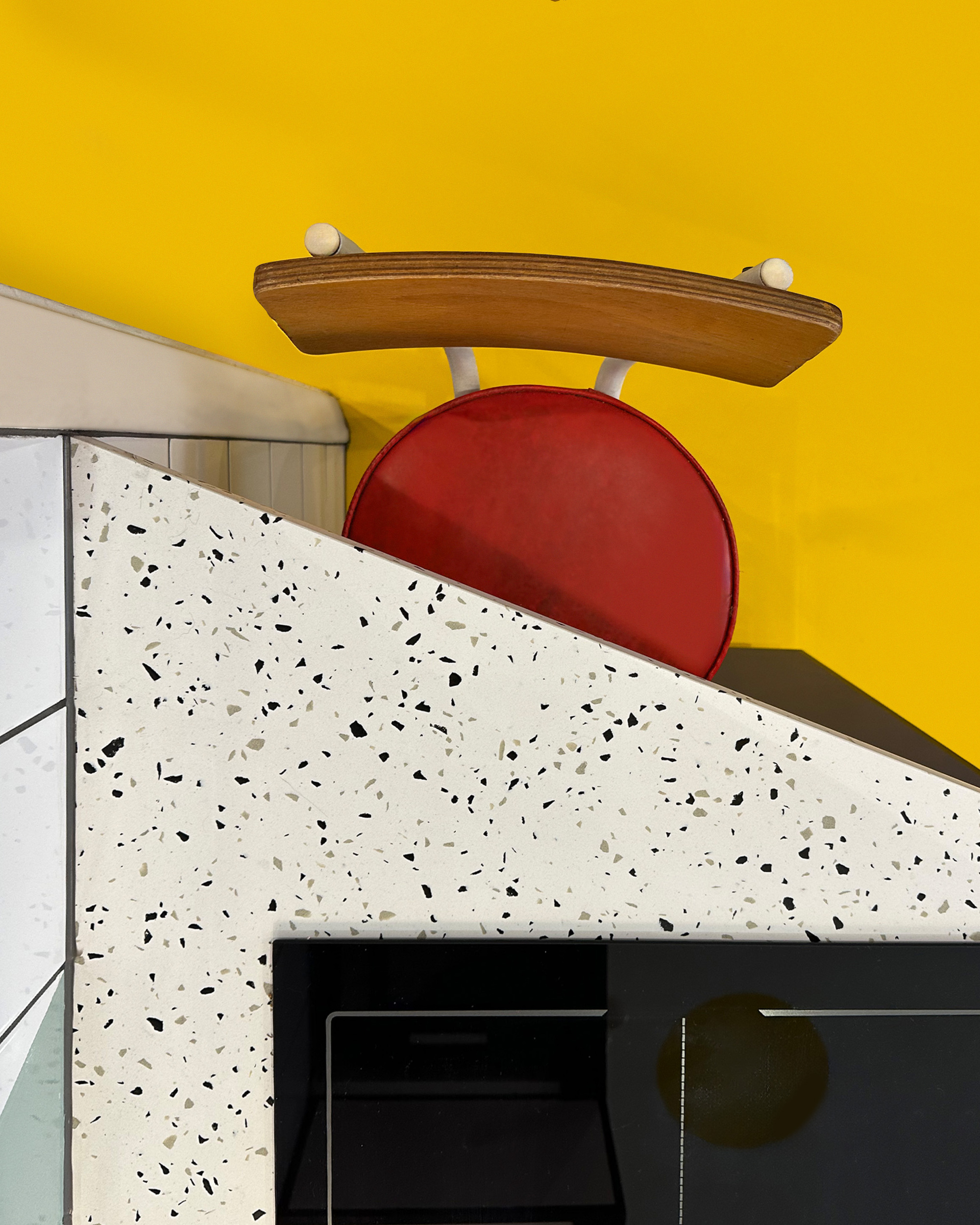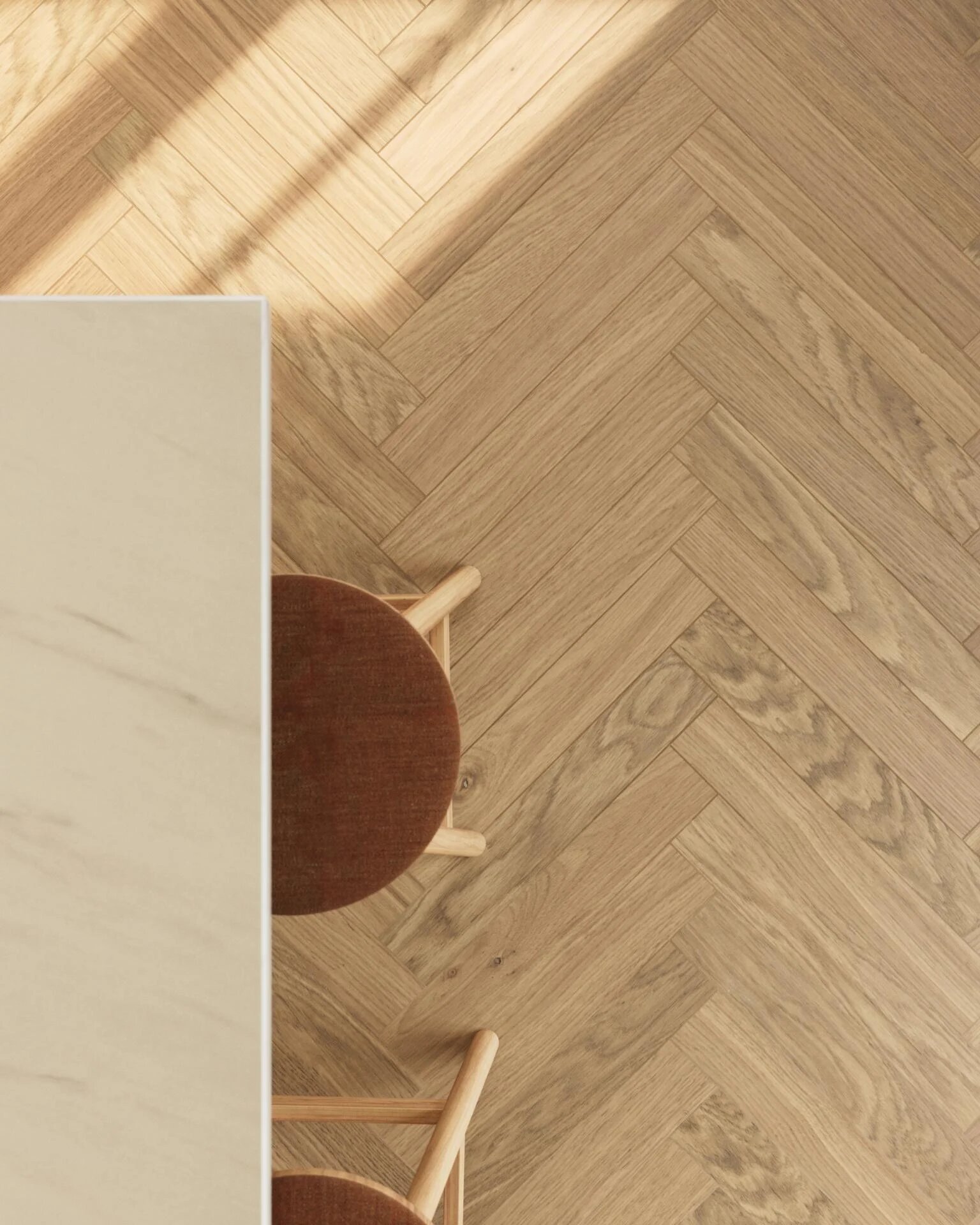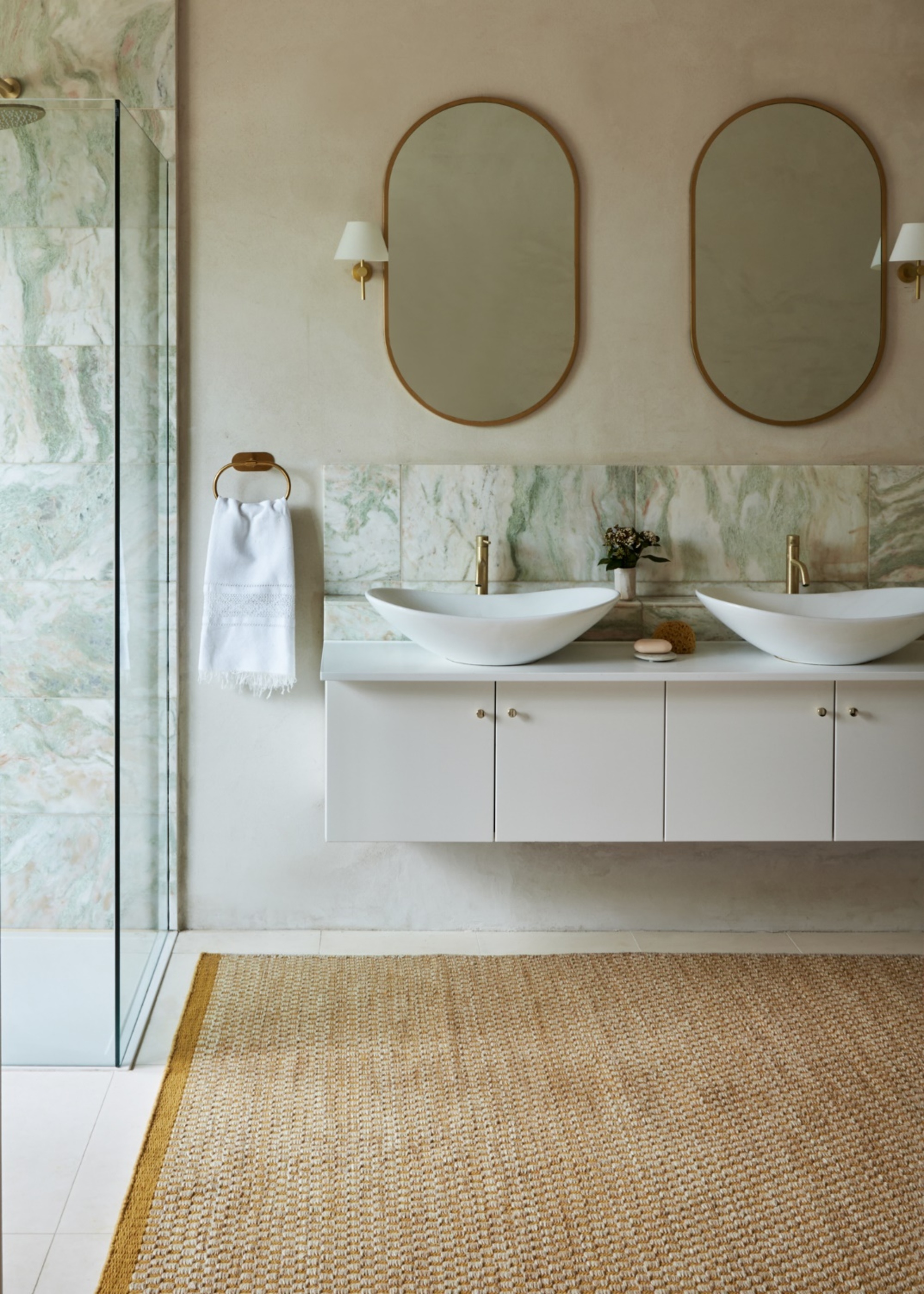It Starts From the Ground Up — 9 of the Most Eco-Friendly Flooring Options That Still Have Plenty of Style
The future of flooring is green. From cork to FSC-certified hardwood, these stylish surfaces are surprisingly sustainable
Alison Davidson

When deciding on flooring, there are many factors that play a role: how it feels underfoot, durability, longevity, aesthetics, and, for some, sustainability. While eco-credentials may not currently be top of everyone's mind, as the climate crisis deepens and our understanding of the impact of our homes grows, designers are encouraging clients to think green. An eco-friendly floor that looks luxe and performs well, too? That's a win-win-win.
The conversations around sustainable interior design are changing, too. It's no longer a trend, but a mindset shift. Today's homeowners want real, sustainable floors with traceable roots, ethical production from factory to floor, and third-party certification.
And it's not just better for the planet, but for people, too. Gone are the days of chemical-laden, plastic-filled flooring. In their place, you'll find floor types like engineered hardwood, bamboo, cork harvested from regenerative forests, and upcycled stone.
"As an interior designer with a passion for bold color, I’m always on the lookout for vibrant materials that also meet high environmental standards,” says London-based Hannah Drakeford, who recently used citron yellow vinyl flooring in a kitchen — a phthalate-free, low-VOC alternative to traditional toxic vinyl.
So, what is the most eco-friendly flooring? Experts agree: it's sustainably sourced wood, particularly FSC-certified or reclaimed varieties. But, of course, wood isn't your only option. Below, we've rounded up nine of the most eco-friendly flooring alternatives that tread lightly on the earth, without compromising on style.
1. Bamboo

Bamboo flooring is a favorite because it’s fast-growing, renewable, and requires minimal energy to harvest, explains Levi Schonfeld, project manager at Hover, a home improvement company.
"Bamboo brings a natural warmth that pairs beautifully with neutral tones, light wood furniture, and greenery," he adds.
The Livingetc newsletters are your inside source for what’s shaping interiors now - and what’s next. Discover trend forecasts, smart style ideas, and curated shopping inspiration that brings design to life. Subscribe today and stay ahead of the curve.
"It’s definitely one of the most eco-friendly types of flooring," adds Mike Fretto, creative director at Neighbor. "It doesn’t cause deforestation like cutting down other trees does."
2. Cork

Cork flooring was particularly popular in the 70s when cork surfaces were used for a number of different things around the home.
The bark is harvested from cork oak trees, which are evergreen and native to southwest Europe and northwest Africa, every seven years, with trees often producing for over 300 years. Interestingly, harvested cork oak trees also have the capacity to fixate almost five times more carbon than other trees.
In fact, the role of cork in reducing the impacts of global warming is significant, with studies indicating Portuguese cork forests can absorb 4.8 million tons of carbon per year.
All of the cork is used, even cork dust which is used to generate energy. But beyond its sustainability credentials as a high-performance, eco-conscious, resilient material, cork floors look just as good as it feels.
Sydney-based Nina Still of Still Space Architecture frequently sources cork “for clients that prefer a softer feel underfoot — particularly those who enjoy walking barefoot,” she says. “In a recent project, we opted for a CORK ART floor, which offered a beautifully organic texture that complemented the timber-clad interior seamlessly.”
3. Linoleum and Marmoleum

An unsung hero is linoleum — real linoleum, not vinyl. “Made from linseed oil, wood flour, and jute, it’s biodegradable, surprisingly elegant, and available in modern colorways that can either pop or recede,” says Elissa Hall, lead designer at Red Awning.
And while linoleum was particularly popular in the 30s, 40s and 50s, marmoleum was introduced slightly later and differs in that it doesn't require any adhesive to install.
Both products are made from solidified linseed oil, pine resin, ground cork dust, sawdust, and mineral fillers such as calcium carbonate, meaning it’s a totally natural product.
4. Vinyl

And although vinyl floors use different plastics and PVC's in its composition, some flooring companies have come a long way to introduce renewable and sustainable practices into its production, particularly through the use of recycled and recyclable materials.
"Our own PVC base manufacturer reuses all vinyl waste that is generated in the production of its ranges," says Joe Kennedy of For The Floor & More. "It is worked down and sent back to process."
Joe also notes that the Circular Flooring project was set up to develop environmentally-friendly ways to recycle post-consumer vinyl floorcoverings, with techniques such as Creasolv working to dissolve and remove any undesirable plasticisers in order to achieve high-quality vinyl material that can be re-used in new floorings.
While harder to source that other eco-flooring options, designer Hannah Drakeford managed to find a low-VOC, solvent-free yellow vinyl for a Memphis-Milano-inspired kitchen in London, shown above. "Finding something that was not only eye-catching and durable enough for such a high-traffic space, but also sustainable, was no mean feat," she says. But it was absolutely worth it.
5. FSC-Certified Wood

Because they are durable, hardwearing, can be re-sanded, and, if looked after properly, can last for hundreds of years, wood flooring ideas are certainly worth considering simply for their longevity.
Damaged planks can be replaced individually instead of replacing a whole floor and at the end of its long life, wood is biodegradable. But — and it's a big but — it's absolutely crucial that you ensure your wood floors come from a FSC- or Nordic Swan-certified source. These days, trees are harvested at such a rate that deforestation is occurring on a massive scale, so ensuring your floors come from certified source means it's more likely to be harvested responsibly, from well-managed forests that are continually replenished and have a lesser impact on their surrounding environment.
“Engineered wood floors are even better," says Stuga Founder and CEO Marc Bacher. "They usually pair a top layer of oak with faster-growing species like spruce or pine beneath, which minimizes the impact on slow-growing oak forests."
Marc Bacher is the CEO of Stuga, a direct-to-consumer hardwood flooring company with a focus on sustainable design. It uses responsibly-sourced timber, doesn't use toxic glues or finishes, and its Swedish factory is climate-positive, with all wood waste recycled into biofuel.
6. Hardened Wood

Another wood option is hardened wood. What is it? Well, Swedish hardwood company, Bjelin, partnered with its sister company, Valigne, to develop an exceptionally durable hardwood floor via Woodura surface technology.
It's still real wood but “it’s up to three times stronger and more dent-resistant than traditional engineered wood floors," Bjelin's CEO Fredrik Alfredsson explains. "Remarkably, this method allows for up to ten times more flooring to be produced from the same amount of timber, maximizing resource efficiency and minimizing waste."
Fredrik Alfredsson is the CEO of Bjelin, an innovative flooring company with a focus on sustainability and cutting-edge technology. It uses an innovative click-flooring solution that reduces environmental impact, as well as maximise raw material use and minimise waste in its flooring production.
7. Reclaimed Materials

And then, of course, there is reclaimed wood. "Reclaimed flooring is as eco-friendly as it gets, as you’re giving wood that has already been used, another lease of life," says Jon Ashbrook of Ted Todd Fine Floors.
"It would otherwise end up in landfill. You are extending its lifecycle, continuing its history and heritage for many years to come," he adds. "Often these woods are reclaimed from beautiful sites such as churches, barns, schools and factories and are steeped with centuries of history and use which will now live on."
In fact, finding reclaimed wood from interesting places has become so popular, there is even a term for it: 'wood bragging'.
But using reclaimed materials isn't restricted to just woods — stones and bricks work just as well. In fact, there is even a style of flooring called palladiana, which is similar to terrazzo but uses larger (and potentially offcut) irregular slabs of stone and marbles embedded within a cement or binder.
8. Natural-Fiber Carpets

Sisal, seagrass, and jute are all popular natural, plant-based fibers that look alike and often get grouped together, but they are not the same and differ greatly in texture, durability, and feel.
But, what they do share is that they're all eco-friendly flooring options made from renewable materials, and are naturally moth and dust mite-resistant, making them a healthy option for asthma, eczema, and other allergy sufferers.
Seagrass
Seagrass is a plant that grows in coastal waters around the world. To make the flooring, it is hand-picked and dried. The fibers are then woven together to create different designs and patterns which tend to be variations of the same colors, usually green or golden hues.
It is durable and good for high traffic areas, making it a good living room flooring idea, and it's more resistant to tears that other types of natural flooring. But you'll want to avoid using seagrass on stairs, as its smooth surface can become easily damaged and slippery over time.
As it is a water-based plant, this eco-friendly flooring can be more vulnerable to mold and mildew than other types, but it is also one of the cheapest types of natural flooring.
Sisal
Sisal comes from plants such as agave or pineapple plants in Africa. The leaves are spun into a yarn-like material which is often used for rope and twine so it’s very durable.
The natural hue is a creamy white to wheat color, which can then be dyed a wide range of colors to suit more lively schemes.
It is extremely hard-wearing and particularly suitable for high traffic areas such as stairs, hallways and landings. Sisal also has straight fibers that make it easier to clean.
Jute
Jute is harvested from India and Bangladesh and has a natural brown hue. Jute tends to be softer than sisal, so is not so hard-wearing, and better for areas that have less traffic. It is more textured and more expensive than sisal, but still a great eco-friendly flooring option.
9. Plastic-Free Carpet

Non-natural carpet may seem like a sustainability wildcard, but it should get a double-take. There are eco-friendly options out there.
"Natural, renewable, biodegradable, and completely plastic-free, Purely Natural by Brintons is the first independently certified 100 percent biobased product the company has produced," shares Brintons’ design director Jodie Hatton. "Made from ethically sourced British wool and backed with cotton, jute, and natural rubber latex, every element is designed to be sustainably disposed of."
Similarly, TENCEL® fiber — which is used to make carpets — is derived from wood pulp and sourced exclusively from sustainably grown forests. TENCEL® fibers are naturally moth resistant and resilient.
"It is the best performing fiber of its type for stain resistance and unlike other natural floorcoverings it can be professionally wet cleaned too," says Julian Downes of Fibre Flooring, who specializes in floor coverings that are ethically and sustainably sourced. "This floor covering’s beauty lies in its light reflecting qualities and it is soft, warm and luxurious underfoot."
FAQs
What is the most eco-friendly flooring?
Cork and sustainably-sourced solid wood are — on balance — the most eco friendly types of flooring. They not only absorb and store carbon but are 100% recyclable, renewable and biodegradable.
Reclaimed wood is also a good option. "We use a lot of natural materials in our work and have a particular interest in the creative reuse of materials and fixtures," says Mark Smyth, co-founder of architecture and interiors studio, Studio Bua. "We created a new mezzanine floor using salvaged timbers and lined with reclaimed floorboards sourced from building sites in Reykjavik, and the wooden columns were salvaged driftwood from a local beach."
Are marble and stone eco-friendly flooring options?
While it can quickly get quite murky, technically marble can be considered an eco-friendly flooring option, especially when compared to artificial stones.
“Compared to manufactured products, marble requires minimal processing, reducing energy consumption," explains designer Leigh Iglehart. "Because marble is a natural stone, it's low-maintenance, durable and has a longer lifespan which ultimately reduces waste," she adds.
Similarly, other types of stone tile floors can also be a sustainable choice — if they’re responsibly sourced. Once again it's important to read the fine print.
For example, Michelle Gerson’s collection for Artistic Tile includes various marbles and onyx, produced using the company’s in-house filtration system which recycles 60,000 gallons of rainwater for use in their precision water jet cutting.
The brand also repurposes post-production scrap material as aggregate, helping to divert waste from landfills. So, when choosing stones, it's important to do your research.
Is porcelain flooring eco-friendly?
Again, this can be a gray area, but porcelain can be considered an eco-friendly alternative to natural stones.
"Porcelain tile is considered a sustainable flooring option due to its long lifespan, fabrication from natural materials, and energy-efficient manufacturing processes,” explains architect Lydia Robinson of Design Storey.
What is the most non-toxic flooring?
When you're talking about toxicity, you're really talking about off-gassing—VOCs (volatile organic compounds) released by adhesives, sealants, and synthetic components. “The most non-toxic option is often solid hardwood finished with zero-VOC sealants, followed closely by natural linoleum and unsealed ceramic or porcelain tile,” says Elissa Hall.
What is the most energy-efficient flooring?
There’s no single answer. It depends on the context, location, and priorities. That said, FSC-certified wood and natural cork are at the top. Cork is harvested without cutting down the tree, plus is naturally antimicrobial.
But we did say it starts from the ground up. When it comes to considering sustainability in your home, it applies to all spaces, surfaces, and styling choices.
So once you've selected your flooring, why not move on to sustainable wall finishes next?
Lauren Jones is a Texas-based writer who covers everything from architecture to interiors, sustainability, art, and travel. Apart from writing for publications including Architectural Digest, Dwell, Wallpaper, and, of course, Livingetc, she has also worked in-house at Scandi flooring company, Stuga, and custom cabinets and door maker, Semihandmade.
- Alison DavidsonContributor
